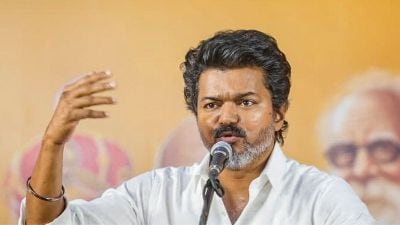Floods and fast food
Someone briefed after a donors' meeting for Bangladesh told me what the grumbles were all about: population growth, global warmin-g, natu...

Someone briefed after a donors’ meeting for Bangladesh told me what the grumbles were all about: population growth, global warmin-g, natural calamities (like the current fl-oods), huge debts (a daunting 220,000 million takas of internal debt and a $14 billion external owing), and not enough food for everyone. There was also a reminder that 70 per cent of the people lived below the poverty line (some say it was now 50 per cent). In a country of 127 million people, 85 per cent still lack electricity, there’s a big power deficit, heavy defaults on bank loans, secret killings, widespread terrorism, trafficking in humans and illegal toll collections.
Does this make Bangladesh a “basket case”? Yes, if seen from the viewpoint of the feather-bedded West, but in large parts of India, Pakistan and Nepal, many are in the same straits. Meanwhile Dhaka is awash with shining foreign, mainly Japanese, cars which gridlock the traffic. In the newer residential areas like Bonani, Gulshan, Baridhara and Uttara, expensiveluxury apartments jostle for space, the city streets are dense with office blocks and plazas, restaurants and fast food eateries and showrooms for cars, electronic goods, airconditioners, washing machines, computers and so on every bit of it imported from abroad. Large shops in Gulshan are crammed with provisions, tinned and frozen foods and toiletries, all imported. Only a tiny fraction from the 50 per cent of the people above the poverty line can afford to buy these imported goods.
Faced with the disapproval of international donors, countries like Bangladesh and India tend to be paranoic. But Ba-ngladesh has the added burden of sporting a large chip on its shoulder which comes from being ringed on three sides by a huge neighbour. From this springs the genesis of much of Bangladesh’s attitudes, political, economic and social. Political in the sense that since Sheikh Mujeeb’s death all the successive governments (barring the current Awami League) have used anti-India-nism as a vote-getting card. Even theAw-ami League cannot dare to differ if it wants to remain in power. As a vice-president of the BNP (Bangladesh Nationalist Party), the main opposition Party, sneeringly remarked, “The Awami League is anti-India before an election and pro-India after it.” Anti-Indianism is also the icing on the cake that fundamentalist parties like the Jama-at-e-Islam serve. Parties like the BNP constantly warn people ag-ainst India’s rapacious designs, and sing once again as they did before 1971: “Urdu Bangla Bh-ai Bhai, Urdu sange Ba-ngla Chai” (Urdu and Bengali are brothers, we want Bengali along with Urdu.) They also compl-ain that the present government is loading Hi-ndu culture on Bangl- adesh, that India is running guns across the border, of smuggling Rs 15,000 crore worth of goods into the country, of trying to bring off a sh-arp deal to buy Bangladesh’s gas, and so on.
Encouraged by a very disciplined and wealthy party like the Jamaat and often funded by Muslim countries of West Asia, several thousand madrassas(Islamic sch-ools) are growing, providing a cadre of Is-lamic foot soldiers. Some of them are kn-own to be acquiring training in arms. A headmaster of a village school remarked sadly, “People are willing to contribute for a mosque but not for a school.”
A major social problem here concerns the minorities, including the estimated 12 or 13 million Hindus, who constitute 10.5 per cent of the population (Buddhists form 0.6 per cent and Christians 0.3 per cent). But these figures are tentative. There is a high out-migration of Hindus with about 6.63 million having left between 1964 and 1991 and, since then, roughly 537 are leaving a day. Even those who live in Bangl-adesh arrange to have a sanctuary in India or elsewhere in case they have to leave.
Under the Awami League, the recruitment of Hindus to government posts has been greater and there have been unprecedented appointments to responsible directorships and chairpersonships. But, generally speaking, Hindus maintain a low profile. Nothing has yet beendo-ne about the 1.05 million acres of land taken away from the Hindus who left Bangladesh after the Indo-Pak War in 1965, under the Enemy Prop-erty Order II of 1965. This issue concerns 46 per cent of Hindu ho-useholds in Bangladesh. All that has been done in the matter is to change the name of the law to Vested Property Act. The Babri Masjid demolition by Hindu fundamentalists in India brought the roof down on Hindus in Bangladesh. Since then they are doubtful if they will be permitted to remain on a permanent basis. A constant riposte from the Bangladesh end is that the BSF is continuously pushing people into Bangladesh.
But what is India’s response to all this? The widespread perception in Bangl-adesh is that India is insensitive to Ba-ngladesh’s needs. There is truth in this. Indian policy makers don’t seem to realise that for India, Bangladesh, with its access to Southeast Asia, is far more important than Pakistan.
As I drove 55 km from Dhaka to Kaliakoir — not far from the new Jamuna Bridge — tosee a recently set-up button factory (a natural adjunct to the garment industry) built turn-key with Italian machinery, I passed a row of new factories (pharmaceuticals, shoes, denims, poultry, knitting, and so on) which have op-ened up in the area. But Bangladesh is not industrialising fast enough. By 1987, industry was contributing only 10 per cent to the GDP. A friend, who was until recently the president of a local Chamber of Commerce, believes that today industry accounts for only 11 per cent of GDP. Growth therefore has certainly been slow. It was also felt that Indian investment in Bangladesh was negligible, despite the fact that Bangladesh offered very generous terms to investors. Japan, Korea, the USA and the UK are the sizeable investors here.
The fact is that Bangladesh and India are very like. The poor in both countries are generally ignored by the small group of the well-to-do. They are beset by unemployment, malnutrition and are unable to afford medical treatment. Around 56 per cent ofagricultural labourers are landless and the country has thousands of abandoned wives left to scrape a living and bring up their infants.
The shoals of Japanese cars, new or reconditioned, which crowd the roads of Dhaka, should fool no one. Even the casual visitor can witness scenes like wo-men picking up discarded green coconut shells and shredding them with their hands to use for kitchen fuel or the blind and infirm begging on the streets. These are scenes that are familiar to any Indian and are a reminder of a common history and destiny.






- 01
- 02
- 03
- 04
- 05

























